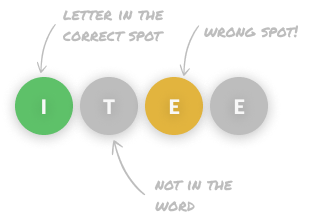Distributed Tracing with Jaeger, Kubernetes, and Istio you own this product
- prerequisites
- intermediate Java and Spring Boot • basics of Jaeger• basics of Istio
- skills learned
- create a RESTful microservice with Spring Boot • instrument tracing inside multiple microservices with OpenTracing API and Jaeger SDK • trace propagation across process boundaries through HTTP header
pro $24.99 per month
- access to all Manning books, MEAPs, liveVideos, liveProjects, and audiobooks!
- choose one free eBook per month to keep
- exclusive 50% discount on all purchases
lite $19.99 per month
- access to all Manning books, including MEAPs!
team
5, 10 or 20 seats+ for your team - learn more

In this series of liveProjects, you’ll deploy distributed tracing to help an eCommerce company manage its new microservices infrastructure. You’ve just been hired by eShop, a rapidly growing company that adopted microservices due to the flexibility they provide developers. eShop is finding that managing and troubleshooting its ever-increasing number of microservices is a challenge, and so your task is to use distributed tracing to develop a high-level picture of requests across these microservices. You’ll implement distributed tracing using Jaeger, Kubernetes, and Istio. Each liveProject in this series can be tackled individually, or as part of an extended learning experience.
here's what's included





choose your plan
team
- five seats for your team
- access to all Manning books, MEAPs, liveVideos, liveProjects, and audiobooks!
- choose another free product every time you renew
- choose twelve free products per year
- exclusive 50% discount on all purchases
-
![]() Distributed Tracing with Jaeger, Kubernetes, and Istio project for free
Distributed Tracing with Jaeger, Kubernetes, and Istio project for free
Prerequisites
This liveProject is for experienced Java developers who are also confident users of Docker. To begin this liveProject, you will need to be familiar with the following:
TOOLS
- Intermediate Java
- Intermediate Spring Boot
- Intermediate Docker
- Basics of Jaeger
- Basics of OpenTracing
you will learn
In this liveProject, you’ll get hands-on experience tracing instrumentation and adding it to the application code inside a single microservice.
- Create a RESTful microservice with Spring Boot
- Instrument tracing inside a function with OpenTracing API and Jaeger SDK
- Build a Docker image for deployment
- Run Jaeger with Docker
 features
features
- Self-paced
- You choose the schedule and decide how much time to invest as you build your project.
- Project roadmap
- Each project is divided into several achievable steps.
- Get Help
- While within the liveProject platform, get help from other participants and our expert mentors.
- Compare with others
- For each step, compare your deliverable to the solutions by the author and other participants.
- book resources
- Get full access to select books for 90 days. Permanent access to excerpts from Manning products are also included, as well as references to other resources.


 Distributed Tracing with Jaeger, Kubernetes, and Istio project for free
Distributed Tracing with Jaeger, Kubernetes, and Istio project for free
